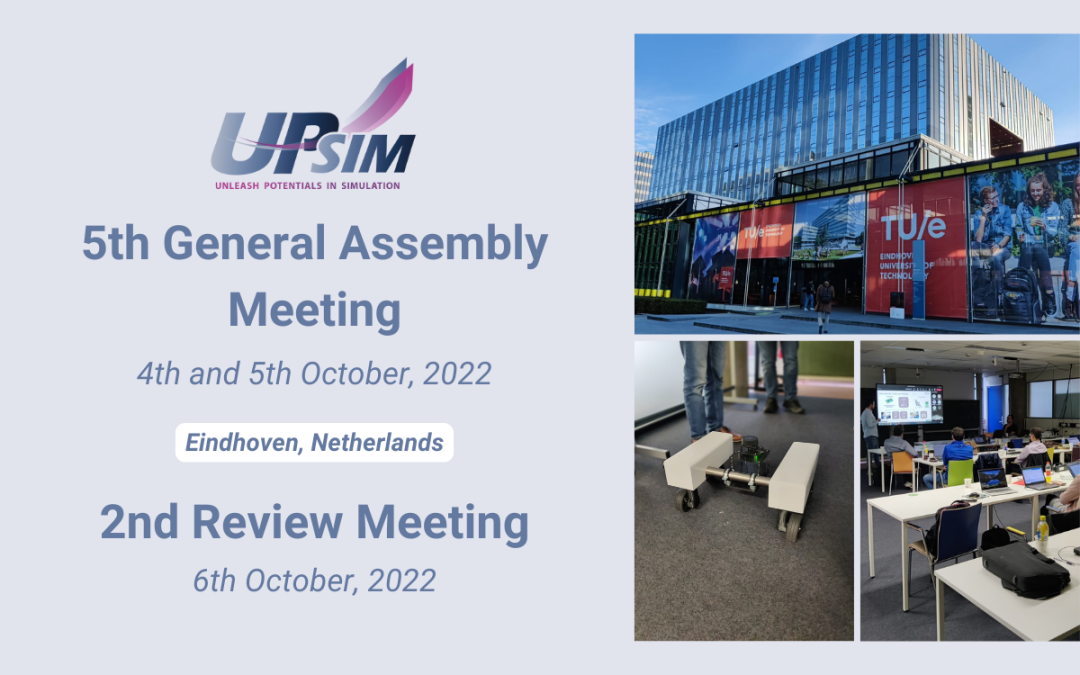After two years of almost virtual collaboration, the UPSIM partners were finally able to come together for the 5th General Assembly Meeting and 2nd Review Meeting in Eindhoven, Netherlands. The meetings were hosted TU Eindhoven with wonderful hospitality and the partners used this hybrid meeting to recap the last 6 months and discuss upcoming activities.
Following the General Assembly Meeting, the UPSIM consortium invited the ITEA reviewers to a hybrid review meeting in Eindhoven. There, the partners were able to present their progress and developments, and the reviewers had the opportunity to ask questions. The reviewers provided valuable feedback to maximise the impact of the UPSIM project. The discussions during the review meeting led to many exciting conversations and impressions that the UPSIM consortium will take into the third year of the project. The reviewers’ feedback was overall very positive, and they praised the UPSIM consortium for its work so far.
Despite the hurdles Corona has put in the way of the UPSIM partners, UPSIM has already achieved impressive results. The main achievements so far:
- Specification of a Process Assessment Model, referred to as Modelling & Simulation SPICE (M&S SPICE), for assessing the implementation of the recently published Credible Simulation Process Framework
- Successful application of the Goal Structuring Method (GSN) method, which is well-known from functional safety analysis, for derivation of modelling and simulation requirements as well as arguing simulation credibility in form of a Credibility Argument.
- Development of a so-called Credibility Development Kit (CDK) representing a framework for specification of quantification methods and thereby enabling multilateral understanding of M&S quality (open source available).
- Specification and implementation of a data model within an enterprise data management platform (Cluu) for triggering simulation requests and tracing related data.
- Development of a specification for uncertainty description of parameters within Modelica models (open source available).
- Development of approaches for extending FMUs to NeuralFMUs based on Julia language (open-source available).
- 7 demonstrators are prepared for the evaluation of UPSIM developments during the final project year (4x automotive, 1x agriculture, 2x healthcare).
- 75 Exploitation Related Achievements were reported by project partners.

